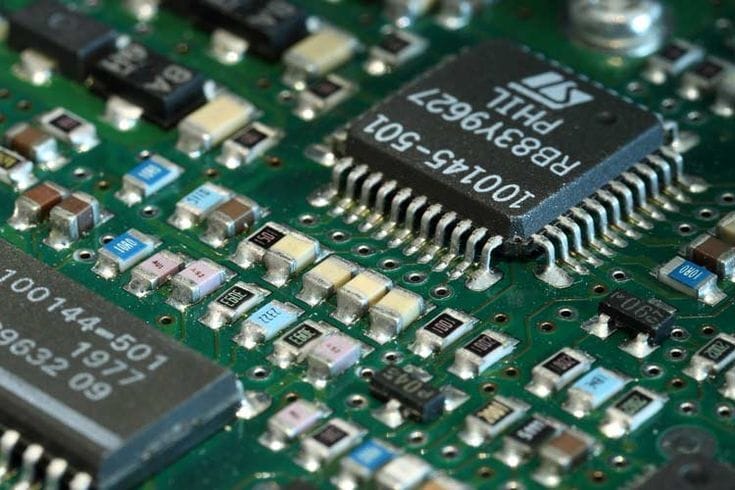Integrated circuits (ICs) are the hidden engines in your devices. These tiny silicon chips changed electronics forever. Let’s explore how they work and why they matter to you.
What’s Hiding Inside That Chip?
Think of an IC as a microscopic city on silicon. It packs transistors, resistors, and wires into a space smaller than your fingernail. Without this miniaturization, your smartphone wouldn’t exist. It’s engineering magic made real.

From Clunky Tubes To Pocket-Sized Power
The journey is fascinating:
- 1947: Bell Labs invented the transistor—goodbye, bulky vacuum tubes!
- 1958: Jack Kilby (Texas Instruments) built the first crude IC. Game changer.
- 1959: Robert Noyce (Fairchild) cracked mass production with the planar process.
- Today: We’re packing billions of transistors on chips, pushing Moore’s Law to its limits.
ICs Wear Different Hats For Different Jobs
Not all chips are created equal:
- Digital ICs: Masters of 1s and 0s. They run your laptop’s CPU, store data in RAM, or power flexible FPGAs.
- Analog ICs: Work with real-world signals. Amplify your music (op-amps), keep voltages steady (regulators), or sense temperature.
- Hybrid Chips: Best of both worlds. Convert analog sounds to digital (ADC) or vice versa (DAC)—key for microphones or speakers.
- Memory Chips: Your device’s notebook. ROM holds instructions, RAM juggles tasks, Flash saves your photos.
- Microprocessors: The boss. CPUs and SoCs call the shots in everything from smartwatches to car engines.
Why ICs Beat Old-School Wiring Hands Down
Here’s why they dominate:
- Shrinks Devices: No more room-sized computers. Thanks, ICs, for your sleek gadgets.
- Speed Demons: Shorter paths = faster calculations. Your apps launch instantly for a reason.
- Less Can Go Wrong: Fewer solder joints mean fewer failures. Reliability built in.
- Sips Power: Runs cooler and longer on batteries—essential for wearables.
- Cost-Effective: Mass production slashes prices. Tech is affordable because of this.
Birth Of A Chip: More Complex Than You Think
Making ICs is a high-stakes dance:
- Blueprint Phase: Engineers dream up specs and model circuits with smart software (EDA tools). AI is now helping.
- Silicon Surgery:
- Start with ultra-pure silicon wafers—like glass dinner plates.
- “Etch” patterns using light (photolithography)—think microscopic stencils.
- Add layers of metals and chemicals to build components.
- Cutting-edge fabs now use 3D “FinFET” transistors at 3nm!
- Armor Up: Slice the wafer, shield each chip, and add connectors (BGA/LGA). New 3D stacking crams more power into tight spaces.
ICs Are Everywhere (Seriously)
You interact with them daily:
- Your Pocket: Phones, tablets, wireless earbuds.
- Your Home: Smart thermostats, security cameras, game consoles.
- Your Car: Engine computers, airbag sensors, touchscreens.
- Your Health: Pacemakers, glucose monitors, MRI machines.
- Big Systems: Cell towers, satellites, factory robots.
What’s Next? The Chip Revolution Rolls On
The future looks wild:
- Shrinking Further: 2nm chips are coming. New materials like gallium nitride (GaN) boost speed.
- All-In-One Chips (SoCs): CPU + memory + modem on a single sliver of silicon—perfect for tiny IoT devices.
- Energy Misers: Chips that run on whispers of power for decade-long sensors.
- Brainy Computing: Neuromorphic chips mimicking human neurons for smarter AI.
- Chip Teams: “Chiplet” designs where specialized chips work together in advanced 3D packages.
ICs are the quiet giants behind our digital lives. They turn sci-fi dreams into everyday reality. Understanding them helps you see your tech differently.
Need cutting-edge chips for your project? Work with suppliers who live and breathe this stuff. The right components can turn your big idea into the next big thing.
- Q: In the development history of integrated circuits, which two key events promoted their transition from the laboratory to large-scale applications?
A: First, in 1958, Jack Kilby (Texas Instruments) manufactured the first simple integrated circuit, verifying the feasibility of integrated design. Second, in 1959, Robert Noyce (Fairchild Semiconductor) solved the mass production problem of integrated circuits through planar technology, laying the foundation for their large-scale application. - Q: What key role do hybrid chips play in electronic devices? Please illustrate with specific examples.
A: The key function of a mixed-signal chip is to connect analog and digital signals and enable the conversion between them. For example, the ADC (Analog-to-Digital Converter) in a microphone is a mixed-signal chip that converts analog sound signals into digital signals for device processing. The DAC (Digital-to-Analog Converter) in a speaker is also a mixed-signal chip, which converts digital signals into analog sound signals, allowing users to hear the sound. - Q: What are the important technological directions for future integrated circuits in breaking through performance limitations?
A: The main technical directions include: ① Developing smaller process nodes (such as 2nm) and adopting new materials like gallium nitride (GaN); ② Developing system – on – chips (SoCs) by integrating multiple functional modules; ③ Designing ultra – low – power chips to extend the battery life of sensors; ④ Developing neuromorphic chips to simulate human neurons and enhance AI capabilities; ⑤ Adopting the “chiplet” design, enabling dedicated chips to work collaboratively through 3D packaging.

